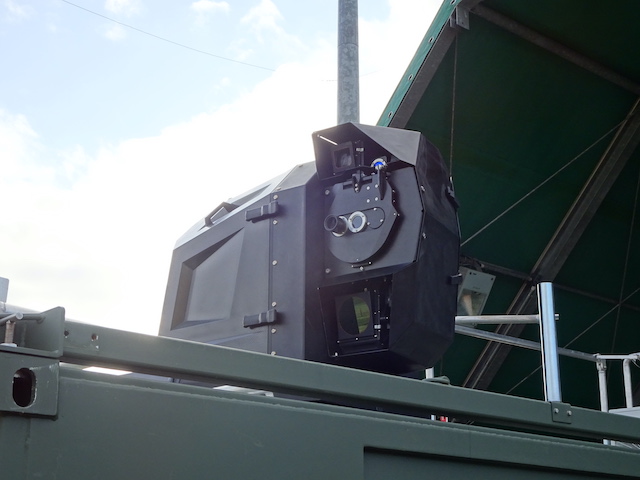Get the weekly SPARTANAT newsletter.
Your bonus: the free E-Book from SPARTANAT.

Laser weapon against drones - successful test for the Bundeswehr
Rheinmetall successfully tested a laser weapon prototype for the Bundeswehr, showcasing its modularity and interface openness. The goal is a mobile prototype with over 10kW power by 2022.
Rheinmetall has successfully tested the functional prototype of a laser weapon, which was developed for the Bundeswehr. These initial trials with the so-called "Laser Testbed" took place as part of a Counter Unmanned Aircraft System (C-UAS) campaign at the Rheinmetall site in Unterlüß (district of Celle).
The Laser Testbed - a test bench - not only serves as a functional prototype of a laser weapon, but also forms the basis for future work at Rheinmetall's Lower Saxony site in Unterlüß. It is designed in such a way that all components of a future laser weapon system can be modularly examined. All interfaces to the sensors - such as radar - or to the power supply system and the laser source are designed to be "open." This allows for testing of various combinations iteratively and comparing the results.
The goal of the current investigations in the Laser Testbed is to develop a suitable configuration for a mobile functional prototype with a laser power of more than 10kW for integration into a Boxer type combat vehicle by the end of 2022.
The Laser Testbed is currently fully equipped with main components from Rheinmetall. However, the open interface architecture also allows for the integration and testing of components from other manufacturers.
The Laser Testbed consists of a 20-foot container divided into three operating rooms: Laser, Operator, and Infrastructure. The laser source is installed in the Laser operating room. It consists of five fiber laser modules, each with 2 kW of laser power. These are coupled by spectral coupling to a total power of 10kW with excellent beam quality. The generated laser beam is directed directly into the beam guidance and from there onto the target via the laser weapon station. The rough alignment of the laser weapon station is based on data from the electro-optical sensor suite integrated in the weapon station. This is operational in both day and night modes. For fine tracking, the reflection of the target illuminated by the illuminating laser in the beam guidance system is evaluated and converted into corresponding control signals for target tracking. Furthermore, under conditions of functional safety, all components necessary for an effector deployment such as beam position monitoring, target point control, etc. were realized for the first time within the optical beam path.
In the conducted C-UAS campaign, different types of drones were optically tracked and neutralized. The combat distances ranged up to one kilometer. The results achieved were more than satisfactory. While observing and complying with the Corona rules, a demonstration was finally carried out at the Unterlüß site for representatives of the Federal Office for Equipment, Information Technology and Use of the Bundeswehr as well as the Federal Ministry of Defense. This met the expectations of all participants.
RHEINMETALL on the internet
SPARTANAT is the online magazine for Military News, Tactical Life, Gear & Reviews.
Send us your news: [email protected]
Ad
similar
Get the weekly SPARTANAT newsletter.
Your bonus: the free E-Book from SPARTANAT.


